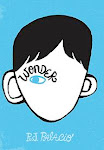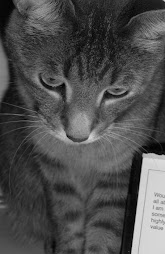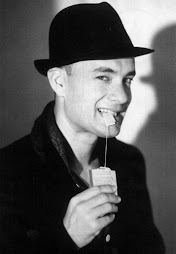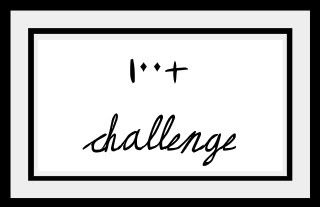
The Graveyard Book
Neil Gaiman

rating: 9.5 out of 10 "books"
I saw Neil Gaiman speak about a month ago with my boyfriend at an area library but embarrassingly enough, had never read any of his works. Hearing him read a selection from “The Graveyard Book,” combined with the repeated mention of him in “The Astonishing Adventures of Fanboy and Goth Girl” by Barry Lyga (reviewed below), not to mention having seen “Coraline” and “Stardust,” I was determined to get some of his stories under my belt. As such, “The Graveyard Book” is my first attempt at doing this.
TGB is the story of Nobody, or Bod, a young boy raised in a nearby graveyard after his family was murdered when he was only a mere toddler. The beginning of the story starts off with the terrible murders, by a character known only as “Jack.” We are unaware of his motives, a theme that continues throughout the story until we finally discover his reasoning for the murders at the very end of the book. Much to the dismay of the man "Jack," the tiny toddler manages to get away before becoming the last family victim, by slipping into the local cemetery where he is protected by its inhabitants. After he is adopted by the Owens,’ a pair of husband and wife ghosts, the boy is named “Nobody,” by cemetery ghosts because he is deemed “nobody but himself.” Having been taken in by the dearly departed means that Bod is granted the freedom of the graveyard, which enables him to be undetected by the living, and also grants him the powers of the dead.
Each chapter reads as almost a separate story itself, and could potentially be read as a stand-alone from the rest of the book. From his adventures through the Ghoul Gate, to his teachings by his mentor, Silas, a ghost neither living nor dead, Bod’s life is full of non-stop excitement. He spends his time playing with the ghost children and learning to read and write by studying gravestones. But soon this cannot fill the longing that Bod develops for proper schooling with live children. More adventures ensue, and near the end of the book, Bod at last encounters his family’s killer, the man Jack.
I thought this story was excellent. Gaiman confessed that he got the idea for this story from the beloved children’s tale “The Jungle Book” by Rudyard Kipling. Although I have not read that story, I can see the correlations. Normally I don’t like fantasy stories but everything about this book was enjoyable. Neil Gaiman has a true gift with words and I recommend “The Graveyard Book” for anyone who likes a good old fashioned fun story.


















